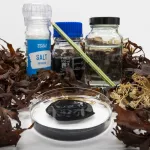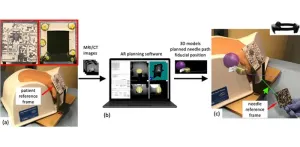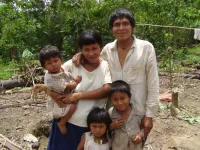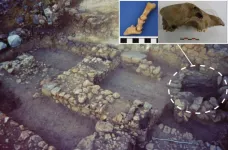(Press-News.org) A good night’s sleep can solve all sorts of problems – but scientists have now discovered new evidence that sleeping well may make you less vulnerable to infection. Scientists at the University of Bergen recruited medical students working in doctors’ surgeries to hand out short questionnaires to patients, asking about sleep quality and recent infections. They found that patients who reported sleeping too little or too much were more likely also to report a recent infection, and patients who experienced chronic sleep problems were more likely to report needing antibiotics.
“Most previous observational studies have looked at the association between sleep and infection in a sample of the general population,” said Dr Ingeborg Forthun, corresponding author of the study published in Frontiers in Psychiatry. “We wanted to assess this association among patients in primary care, where we know that the prevalence of sleep problems is much higher than in the population at large.”
Studying sleep in the doctor’s office
Evidence already exists that sleep problems raise the risk of infection: in a previous study, people deliberately infected with rhinovirus were less likely to catch a cold if they reported healthy sleep. Sleep disturbances are common and treatable, and if a link to infection and a mechanism can be confirmed, it might make it possible to cut down on antibiotic use and protect people against infections before they happen. But experimental studies can’t reproduce real-life circumstances.
Forthun and her colleagues gave medical students a questionnaire and asked them to hand it out to patients in the waiting-rooms of the general practitioners’ surgeries where the students were working. 1,848 surveys were collected across Norway. The surveys asked people to describe their sleep quality — how long they typically sleep, how well they feel they sleep, and when they prefer to sleep — as well as whether they had had any infections or used any antibiotics in the past three months. The survey also contained a scale which identifies cases of chronic insomnia disorder.
Risk of infection raised by a quarter or more
The scientists found that patients who reported sleeping less than six hours a night were 27% more likely to report an infection, while patients sleeping more than nine hours were 44% more likely to report one. Less than six hours’ sleep, or chronic insomnia, also raised the risk that you would need an antibiotic to overcome an infection.
“The higher risk of reporting an infection among patients who reported short or long sleep duration is not that surprising as we know that having an infection can cause both poor sleep and sleepiness,” said Forthun. “But the higher risk of an infection among those with a chronic insomnia disorder indicate that the direction of this relationship also goes in the other direction; poor sleep can make your more susceptible to an infection.”
Although there was some potential for bias in the sense that people’s recall of sleep or recent health issues is not necessarily perfect, and no clinical information was collected from the doctors who subsequently saw the patients, the study design allowed for the collection of data from a large study group experiencing real-world conditions.
“We don’t know why the patients visited their GPs, and it could be that an underlying health problem affects both the risk of poor sleep and risk of infection, but we don’t think this can fully explain our results,” said Forthun.
She continued: “Insomnia is very common among patients in primary care but found to be under-recognized by general practitioners. Increased awareness of the importance of sleep, not only for general well-being, but for patients’ health, is needed both among patients and general practitioners."
END
Sleep too much or too little and you might get sick more, scientists find
A study of nearly 2,000 patients in Norway showed that patients who reported sleeping less than six or more than nine hours had a higher risk of infection.
2023-03-02
ELSE PRESS RELEASES FROM THIS DATE:
Study suggests EHR-focused interventions can significantly reduce unnecessary urine cultures among hospital patients
2023-03-02
Study Suggests EHR-Focused Interventions Can Significantly Reduce Unnecessary Urine Cultures Among Hospital Patients
Initiative highlighted in AJIC provides model for resource-limited institutions to decrease overdiagnosis and overtreatment of asymptomatic bacterial infections
Arlington, Va., March 2, 2023 – Physicians in the largest safety-net hospital system in the United States used two electronic health record (EHR)-focused interventions to significantly reduce inappropriate urine cultures among hospitalized patients. Findings from their study, published in the ...
Edible electronics: How a seaweed second skin could transform health and fitness sensor tech
2023-03-02
Scientists at the University of Sussex have successfully trialed new biodegradable health sensors that could change the way we experience personal healthcare and fitness monitoring technology.
The team at Sussex have developed the new health sensors – such as those worn by runners or patients to monitor heart rate and temperature – using natural elements like rock salt, water and seaweed, combined with graphene. Because they are solely made with ingredients found in nature, the sensors are fully biodegradable, making them more environmentally friendly than commonly used rubber and plastic-based alternatives. Their natural ...
Cocaethylene cardiotoxicity in emergency department patients with acute drug overdose
2023-03-01
Des Plaines, IL — When compared to cocaine exposure alone, cocaine and ethanol exposure in emergency department (ED) patients with acute drug overdose was significantly associated with higher occurrence of cardiac arrest, higher mean lactate concentrations, and lower occurrence of myocardial injury. This is the conclusion of a study titled, Cocaethylene cardiotoxicity in emergency department patients with acute drug overdose published in the February issue of Academic Emergency Medicine (AEM), the peer-reviewed journal of the Society for Academic Emergency ...
Free-hand, real-time needle guidance for prostate cancer diagnosis with augmented reality
2023-03-01
According to the US Centers for Disease Control and Prevention, prostate cancer is the second leading cause of cancer death among men. One of the standard approaches for the diagnosis and treatment of prostate cancer involves transperineal (TP) biopsy. This involves inserting a needle through the perineum wall to collect tissue samples. Current methods for TP biopsy generally include a pre-operation MRI scan and a transrectal ultrasound. These images are then fused together and shown on a monitor to the urologist, who then inserts the needle. The needle insertion can be ...
Special Selection
2023-03-01
A team of global experts has discovered new signals of natural selection in humans.
Led by UC Santa Barbara Tsimane Health and Life History Project co-director Michael Gurven, the team studied two populations living in the Bolivian Amazon rainforest — the Tsimane and the Moseten. Previous studies show that these tropical populations are exposed to many parasites and a variety of pathogens; at the same time, the Tsimane rarely suffer from cardiovascular diseases and dementia. This new research suggests that the Tsimane genome has undergone selection ...
Bronze Age well contents reveal the history of animal resources in Mycenae, Greece
2023-03-01
A large Bronze Age debris deposit in Mycenae, Greece provides important data for understanding the history of animal resources at the site, according to a study published March 1, 2023 in the open-access journal PLOS ONE by Jacqueline Meier of the University of North Florida and colleagues.
Animals were an important source of subsistence and symbolism at the Late Bronze Age site of Mycenae in Greece, as evidenced by their depictions in art and architecture, but more research is needed on the animals ...
What distinguishes fans from celebrity stalkers?
2023-03-01
A survey study of U.S. college students provides new insights into factors associated with the tendency to engage in celebrity stalking behaviors. Maria Wong (Idaho State University, U.S.), Lynn McCutcheon (North American Journal of Psychology, U.S.), Joshua Rodefer (Mercer University, U.S.) and Kenneth Carter (Emory University, U.S.) present these findings in the open-access journal PLOS ONE on March 1, 2023.
Celebrities around the world deal with the threat of unwanted and threatening or intimidating attention or harassment—commonly known as stalking. A growing body of research is exploring and identifying factors that are associated ...
Pregnant Shark birth tracking technology provides key data for species protection
2023-03-01
Most people find sharks threatening. Who doesn’t have an image in their mind of a menacing shark fin racing through the ocean in search of its next meal?
But it is the shark that is threatened.
According to Defenders of Wildlife, a national nonprofit dedicated to protecting imperiled species, 75% of shark species are threatened with extinction and up to 73 million sharks are being killed each year for their fins.
Habitats that were once secure places for sharks to give birth have also been affected. And the fact that sharks have long gestation periods, giving birth ...
Scientists discover how to prevent death of nerve cells in most common forms of MND and dementia
2023-03-01
**Strictly embargoed until 19:00 (GMT) Wednesday 1 March 2023**
Scientists discover how to prevent death of nerve cells in most common forms of MND and dementia
Researchers from the University of Sheffield’s Institute of Translational Neuroscience have discovered how to prevent the death of nerve cells and protect nerves from neurodegeneration in the most common forms of MND and frontotemporal dementia
The researchers used a peptide, a small assembly of amino acids or protein bricks, with a cell-penetrating ...
Obstacles for breast cancer prevention in high-risk Black women
2023-03-01
Black women at high risk of breast cancer face a variety of obstacles that may keep them from care that could prevent cancer and increase the chances they’ll survive if they develop the disease, new research has found.
A study from researchers at The Ohio State University provides insights into the factors that contribute to racial disparities in use of preventive measures, including genetic testing, prophylactic mastectomies and medication to thwart breast cancer.
In the new study, which appears today (March 1, 2023) in the journal PLOS ONE, the ...
LAST 30 PRESS RELEASES:
Study showcases resilience and rapid growth of “living rocks”
Naval Research Lab diver earns Office of Naval Research 2025 Sailor of the Year
New Mayo-led study establishes practical definition for rapidly progressive dementia
Fossil fuel industry’s “climate false solutions” reinforce its power and aggravate environmental injustice
Researchers reveal bias in a widely used measure of algorithm performance
Alcohol causes cancer. A study from IOCB Prague confirms damage to DNA and shows how cells defend against it
Hidden viruses in wastewater treatment may shape public health risks, study finds
Unlock the power of nature: how biomass can transform climate mitigation
Biochar reshapes hidden soil microbes that capture carbon dioxide in farmland
Reducing saturated fat intake shows mortality benefit, but only in high-risk individuals
Manta rays create mobile ecosystems, study finds
Study: Mixed results in using lipoic acid to treat progressive multiple sclerosis
Norbert Holtkamp appointed director of Fermi National Accelerator Laboratory
New agentic AI platform accelerates advanced optics design
Biologists discover neurons use physical signals — not electricity — to stabilize communication
Researchers discover that a hormone can access the brain by hitchhiking
University of Oklahoma researcher awarded funding to pursue AI-powered material design
Exploring how the visual system recovers following injury
Support for parents with infants at pediatric check-ups leads to better reading and math skills in elementary school
Kids’ behavioral health is a growing share of family health costs
Day & night: Cancer disrupts the brain’s natural rhythm
COVID-19 vaccination significantly reduces risk to pregnant women and baby
The role of vaccination in maternal and perinatal outcomes associated with COVID-19 in pregnancy
Mayo Clinic smartwatch system helps parents shorten and defuse children's severe tantrums early
Behavioral health spending spikes to 40% of all children’s health expenditures, nearly doubling in a decade
Digital cognitive behavioral treatment for generalized anxiety disorder
Expenditures for pediatric behavioral health care over time and estimated family financial burden
Air conditioning in nursing homes and mortality during extreme heat
The Alps to lose a record number of glaciers in the next decade
What makes a good proton conductor?
[Press-News.org] Sleep too much or too little and you might get sick more, scientists findA study of nearly 2,000 patients in Norway showed that patients who reported sleeping less than six or more than nine hours had a higher risk of infection.




